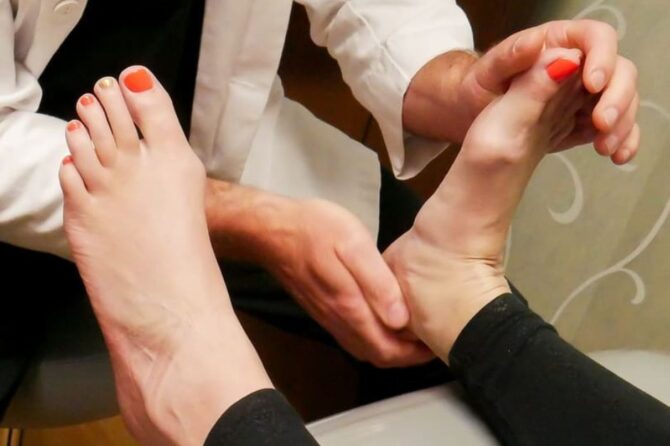
Don’t ignore your heel pain.
Picture this: it’s Sunday evening, and you pull out your phone to check your schedule for this week: several meetings, home repairs that need done, activities to which the kids need taken, and there’s also those workouts you’ve been trying to squeeze in.
Monday morning, you step out of bed, and BAM your heel suddenly has a sharp pain in it. You hobble around a few more steps, and it improves a little. Your first thought: this will probably ease up in a few days. However, after lingering for more than a few weeks, you mutter to yourself “I don’t have time for this.”
Heel pain, and more specifically plantar fasciitis, is one of the most common musculoskeletal conditions that affects our bodies. In fact, at least ten percent of Americans will suffer from the condition sometime in their lifetimes.
The plantar fascia is a thick, fibrous aponeurosis composed of dense connective tissue. It originates from the bottom of the heel bone, and inserts into soft tissue near the ball of the foot. Like a beam under your roof, the plantar fascia provides support and stabilizes your arch.
Plantar fasciitis is inflammation and breakdown of this very dense tissue. One of the analogies I like to use is that the fascia is like a chinese finger trap, only thicker and denser. Thus, it really doesn’t tear or get inflamed that easily. So why does it happen so often? There are a multitude of reasons, including excessive standing, running or abnormal biomechanics such as pronation, weight gain, poorly supporting shoes, and also just the aging of the tissues in our bodies.
Getting treatment early for your plantar fasciitis pain is important to speed up healing. Initially, anti-inflammatories can help to reduce pain, but this does not treat the underlying problem. Doing so requires rest and rehabilitation. Usually some forms of taping and stretching are needed. Physical therapy is also useful. The most important part of healing plantar fasciitis is splinting of the fascia so that it can heal.
Plantar fasciitis that occurs frequently will more often require surgery. Surgical solutions may be necessary only if the plantar fasciitis has not responded to other treatment methods or if additional considerations are present, such as a tight calf muscle. However, there are other non-surgical options such as PRP or amniotic injections that can help you avoid surgery.
Your take home message: if your heel pain is happening on a regular basis, or doesn’t improve after a week, seek out your FAAWC provider for help.
Leave a reply